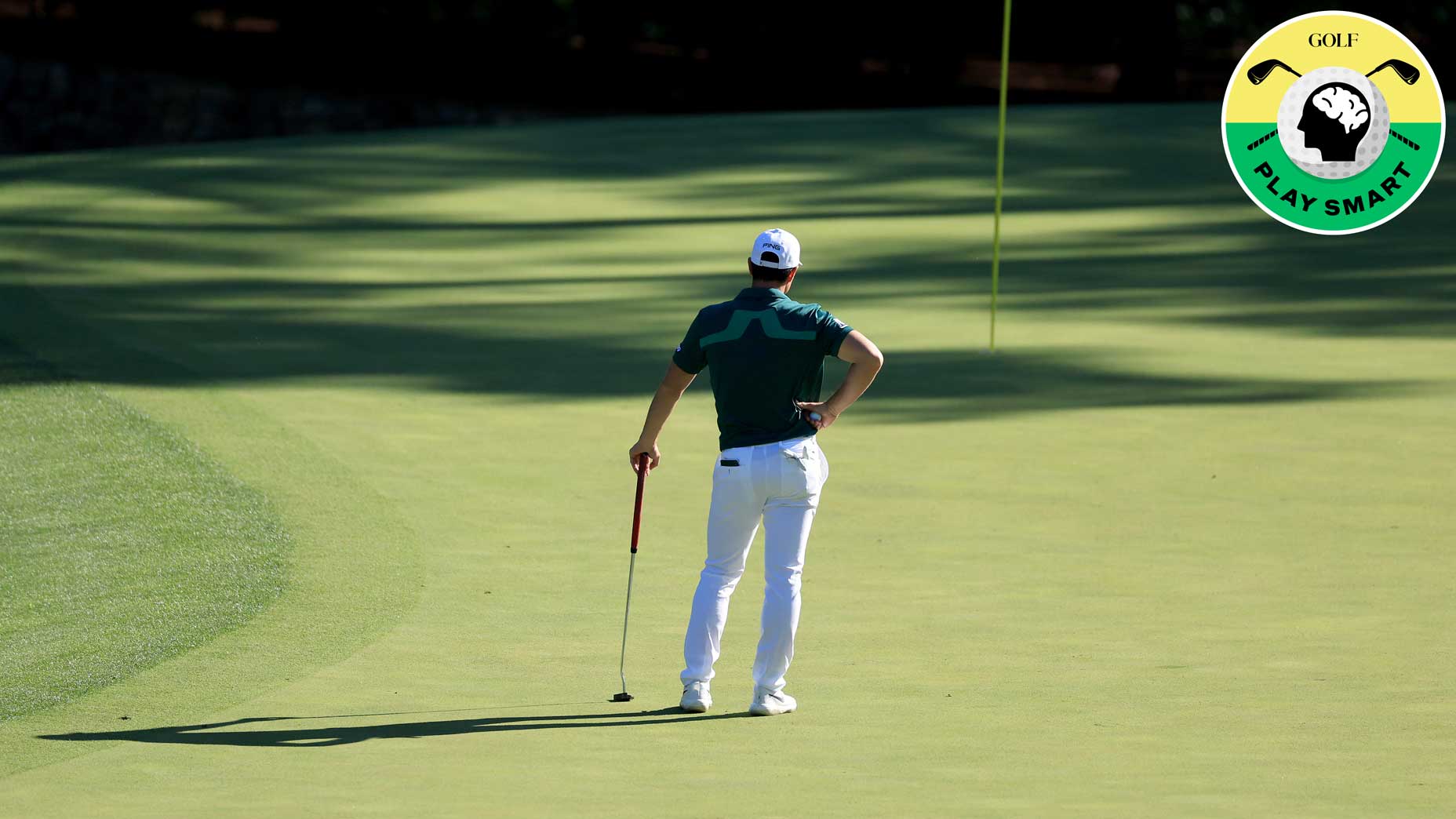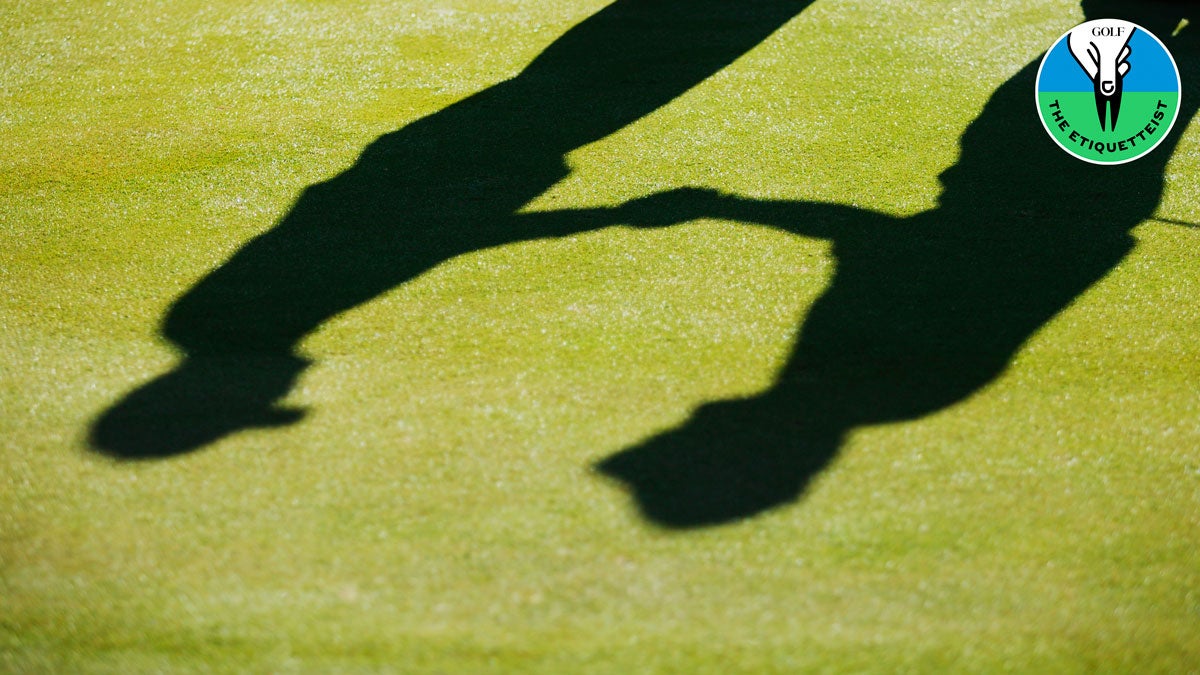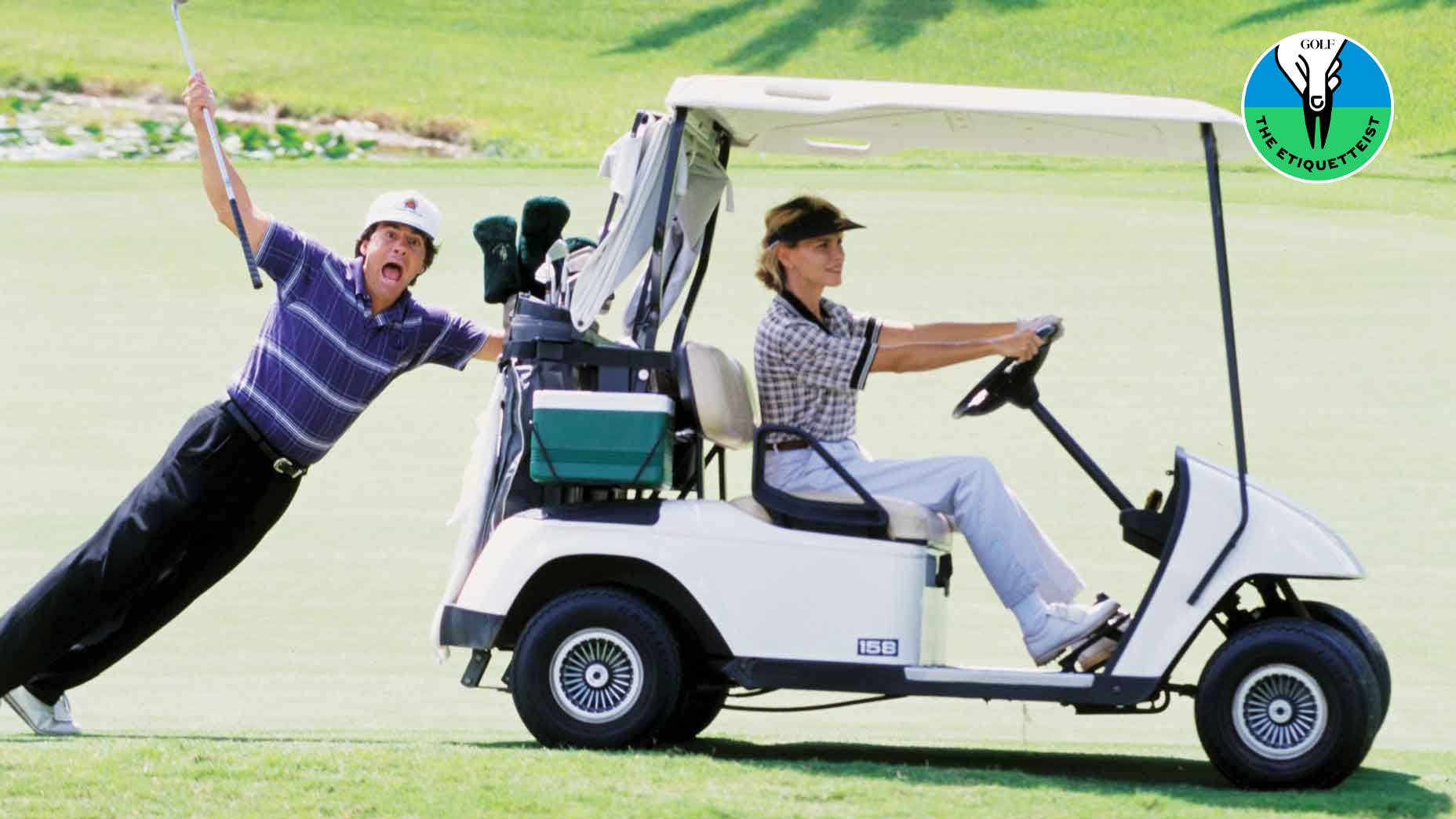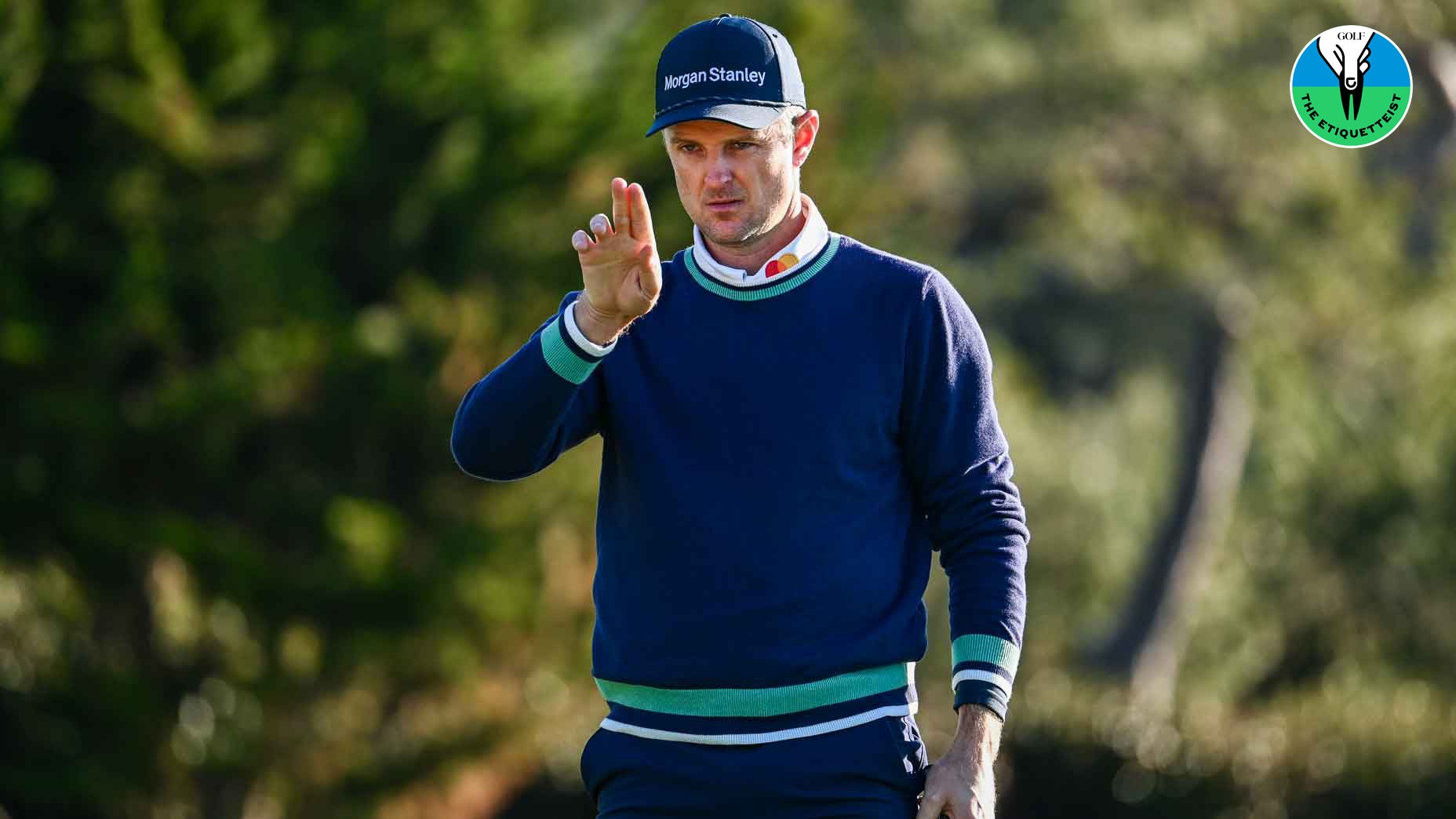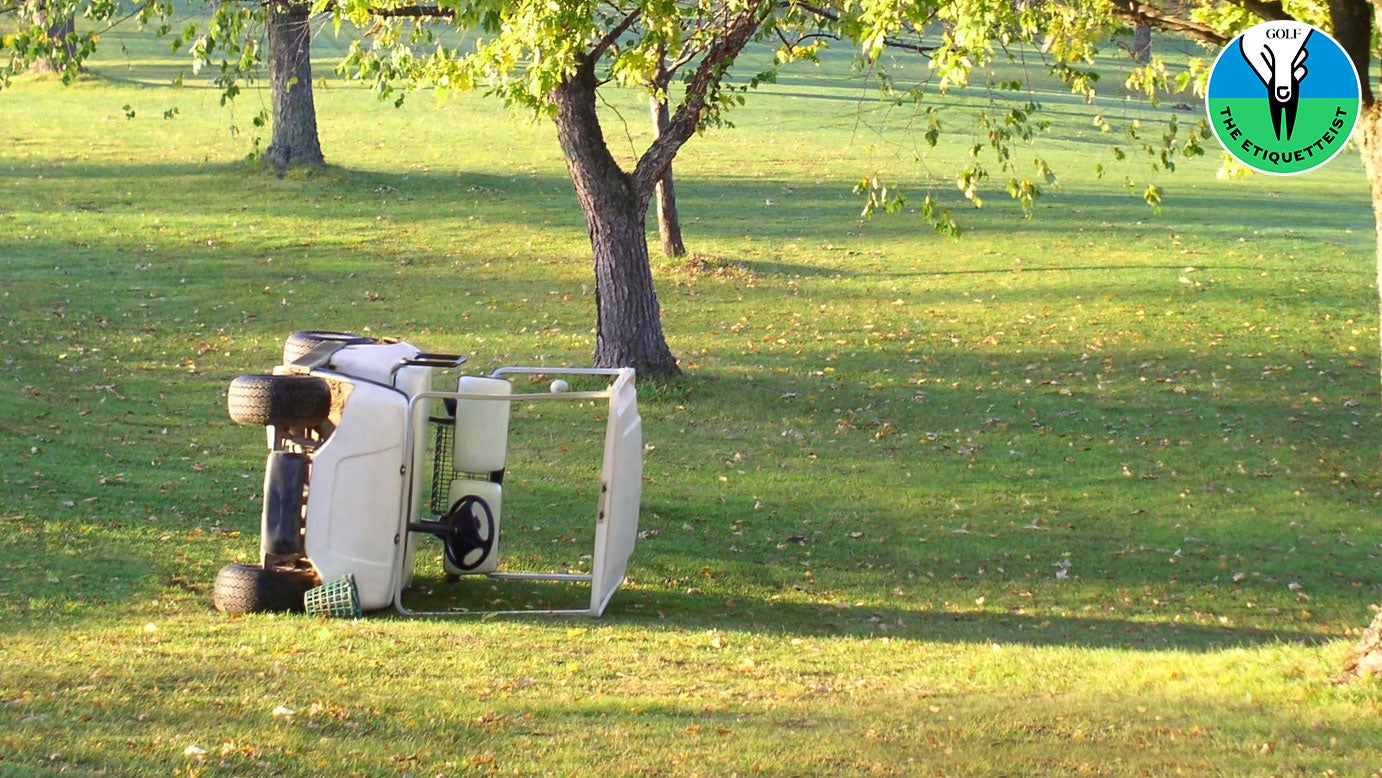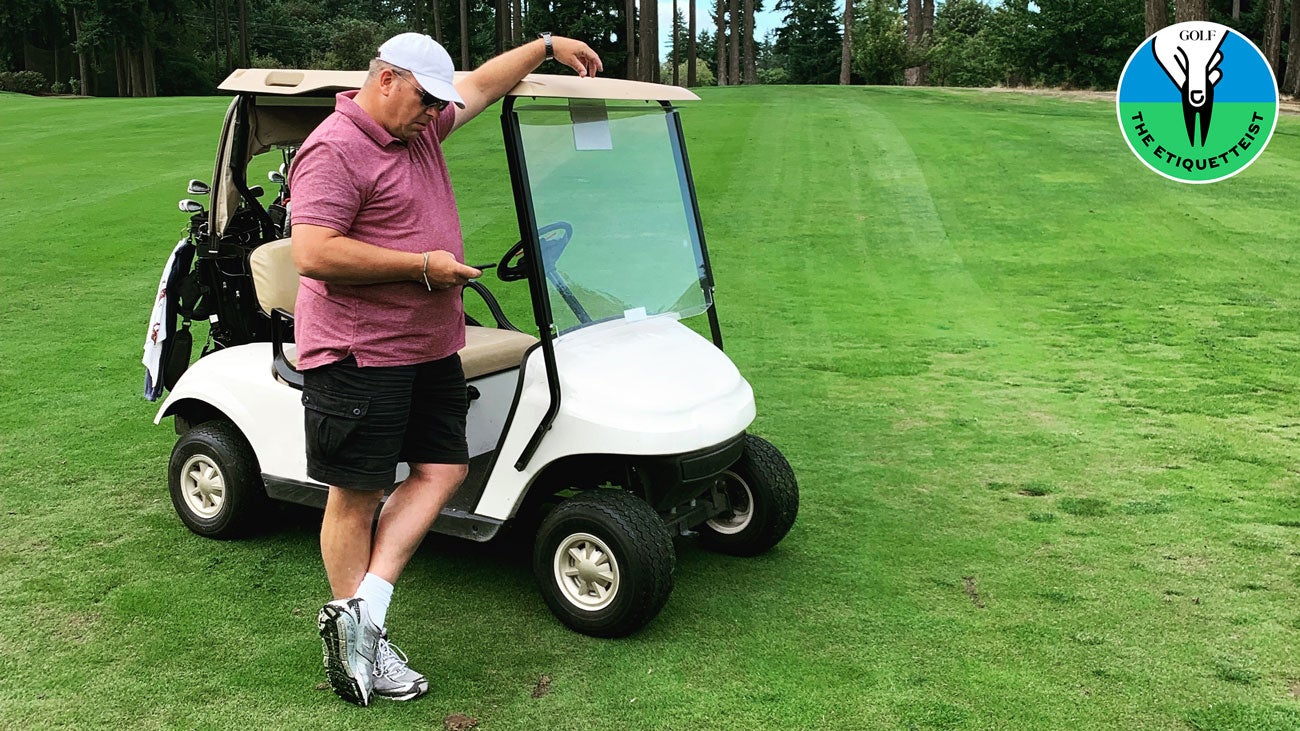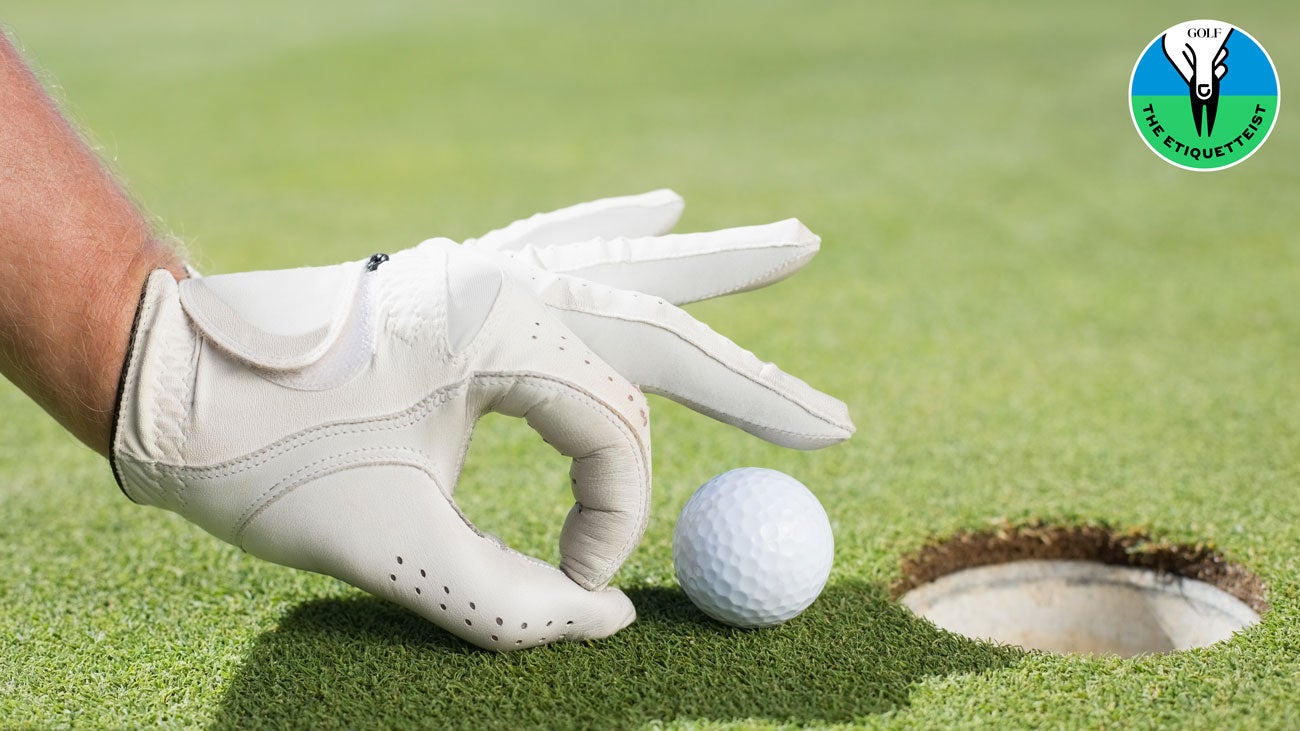Slow play is a scourge. But is playing too quickly also bad etiquette?
- Share on Facebook
- Share on Twitter
- Share by Email

There's a fine line between playing quickly and moving so fast you make others feel rushed.
Getty Images
Jonathan K. from Virginia writes: One of my buddies plays golf at Mach 3, flying off tee boxes before everyone has hit, hustling off greens before everyone has putt out, etc. My other friends and I appreciate his commitment to swift play, but at the same time, seems like bad etiquette to me if you’re rushing around so quickly that it potentially bothers others in your group or players up ahead. Your thoughts, please!
Dear Jonathan,
As someone who believes that three-and-a-half hours on a golf course is more than plenty, the Etiquetteist is not the personification of patience, so he’ll say this quickly: Yes, it’s possible to play too fast.
Like all etiquette, considerations around pace of play are rooted in showing respect for others, even if that comes at the expense of your individual goals. You want to play in jeans and a tank top? That’s nice. But you don’t get to do it if the dress code forbids it. Something similar applies to pace. Just because you want to whip around the course doesn’t mean you necessarily have the right to — not if your behavior has a negative effect on others, i.e., if it makes them feel rushed or dissed.
How can you tell if you’ve crossed that line?
To borrow from a famous quote about pornography: You should know it when you see it.
But just in case, the Etiquetteist will offer a few examples. Playing ready golf isn’t just fair game. It is recommended (assuming you’re not competing in a tournament). That means grabbing the tee if your buddy with the honors is not prepared to hit. It means walking ahead of your partners once the hole is in progress to get in position, provided you’re not walking in anybody’s line of fire.
Around the green is where matters get more sensitive. Something about the close quarters of the putting surface brings impolite behavior into starker relief. It’s a no-no, for instance, to putt out while your partner is lining up a chip or playing from the bunker (unless he’s been hacking it around haplessly in the sand and shows no sign of picking up). It is also poor form to move to the next tee box before your partners have finished putting out.
The Etiquetteist has a fast-playing friend who likes to pull that move, which he justifies it by saying he’s trying set a good example. Being a fast-play role model is not a bad idea. Lou Riccio is in favor of it. Riccio is the chief analytics officer for Fairway IQ, which consults with courses on pace of play, and the author of “Golf’s Pace of Play Bible.” He believes that most of us learn about pace in the same way we learn about the rules: from those we play with. So, he says, “why not be that ‘fast’ player? Maybe others will take notice.”
How pace of play affects your scores, according to scienceBy: Zephyr Melton
But jumping to the next tee while others are still putting isn’t setting a good example. It is simply being rude. You owe your playing partners more respect than that.
What’s frustrating for fast players is that respect isn’t often a two-way street. Slow players rarely show it in return. They are, almost by definition, either too oblivious to notice their effect on others. Or too self-consumed to care. Otherwise, they’d pick up the pace.
If you wind up paired with such a slug, modeling good behavior won’t likely make a difference. You are better off using your words. You might say something like, “I think we’re falling behind and should pick up the pace a bit.” If the course is open in front of you, you might even trot out the old line about needing to get to get to the office or (insert favorite excuse here), “so if you don’t mind, I’m going to play ahead.”
That’s not a great way to make friends. But if these were people you were destined to be friends with, you wouldn’t mind slowing down your pace for them. In such cases, amicably parting ways is a perfectly acceptable solution. You’ll be happier as you hustle off. And they’ll be glad to see you go.
Latest In Lifestyle

Josh Sens
Golf.com Editor
A golf, food and travel writer, Josh Sens has been a GOLF Magazine contributor since 2004 and now contributes across all of GOLF’s platforms. His work has been anthologized in The Best American Sportswriting. He is also the co-author, with Sammy Hagar, of Are We Having Any Fun Yet: the Cooking and Partying Handbook.

